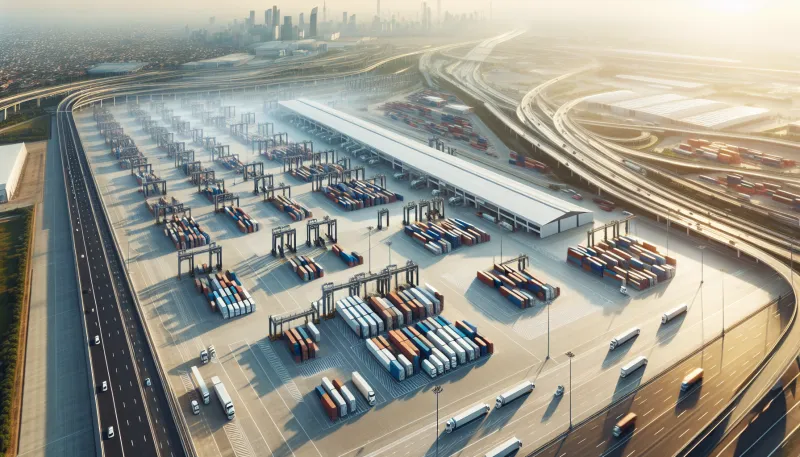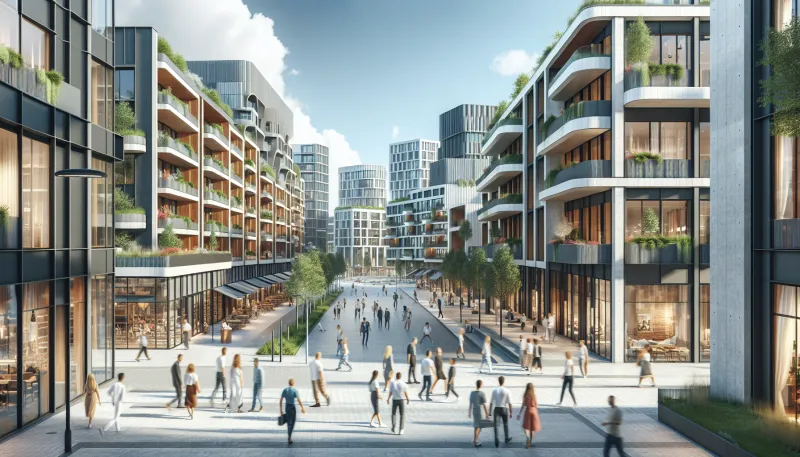
Why Logistics Real Estate Is the Silent Winner of E-Commerce Growth
As e-commerce continues to reshape the global retail landscape, one sector is quietly thriving behind the scenes: logistics real estate. From sprawling distribution centers to strategically located warehouses, these properties are becoming essential assets in the seamless delivery of goods to consumers worldwide. This article explores why logistics real estate stands out as the silent winner amidst the booming e-commerce trend.
- The rise of e-commerce and its impact on logistics
- Strategic locations for speed and efficiency
- Adaptation of real estate to evolving technological needs
- Increased demand for last-mile fulfillment centers
- Impact of consumer expectations on space requirements
- Sustainability requirements influencing logistics properties
- The role of e-commerce giants in shaping real estate trends
- Investment opportunities in logistics real estate
- Challenges faced by logistics real estate in an evolving market
The rise of e-commerce and its impact on logistics
The exponential growth of e-commerce has revolutionized how consumers shop and receive products. Online sales have surged year after year, prompting retailers to rethink their supply chain strategies. This shift has increased demand for logistics facilities that can support faster order fulfillment and last-mile delivery, fundamentally altering requirements for warehouse and distribution spaces.
Strategic locations for speed and efficiency
Location is critical in logistics real estate. Properties near major urban centers, transportation hubs, and highways enable companies to fulfill orders rapidly while controlling costs. Proximity to customers reduces shipping times, a key competitive advantage in e-commerce, especially for same-day or next-day delivery services.
Adaptation of real estate to evolving technological needs
Modern logistics facilities are no longer just storage spaces; they have evolved into highly automated hubs equipped with robotics, conveyor systems, and advanced inventory management technology. Real estate designed to accommodate these technologies supports higher throughput and efficiency in the fulfillment process, meeting the increasing complexity of e-commerce demands.
Increased demand for last-mile fulfillment centers
Last-mile delivery is the final and often most expensive step in the supply chain. To reduce delivery times and costs, e-commerce companies are investing heavily in last-mile fulfillment centers situated within or near urban neighborhoods. This trend is driving significant growth and innovation in small-to-mid-sized logistics real estate assets.
Impact of consumer expectations on space requirements
With rising consumer expectations for fast and free shipping, logistics operators need larger and more versatile spaces to store diverse inventories and handle fluctuating order volumes. The flexibility to scale operations quickly has made adaptable warehouse designs a must-have in the real estate market.
Sustainability requirements influencing logistics properties
Environmental considerations are increasingly shaping logistics real estate development. Green building certifications, energy-efficient systems, and sustainable construction materials are becoming standard features as companies aim to reduce their carbon footprint while complying with regulations and meeting consumer demand for responsible practices.
The role of e-commerce giants in shaping real estate trends
Major e-commerce players like Amazon, Alibaba, and others are net drivers of logistics real estate demand. Their massive scale and complex supply chains push for innovative facility designs and strategic acquisitions of prime logistics properties, setting industry standards and influencing the wider market for years to come.
Investment opportunities in logistics real estate
Investors are increasingly drawn to logistics real estate due to its strong cash flow, resilience during economic fluctuations, and growth potential tied to the e-commerce sector. Institutional and private investors alike view these assets as a reliable component of diversified real estate portfolios.
Challenges faced by logistics real estate in an evolving market
Despite its advantages, logistics real estate faces challenges such as rising land costs, zoning restrictions, and labor shortages. Additionally, rapid technological changes require ongoing capital investments to keep properties competitive. Navigating these issues is essential to sustaining growth in this vibrant sector.
Tommy is a property-passionate journalist who covers the forces shaping housing and the built environment. With a data-driven approach and a reporter’s curiosity, he writes on market cycles, urban development, PropTech, and policy—always connecting numbers to everyday lives. [Name]’s work blends clear analysis with on-the-ground reporting to help readers navigate trends, opportunities, and risks across residential and commercial real estate.




